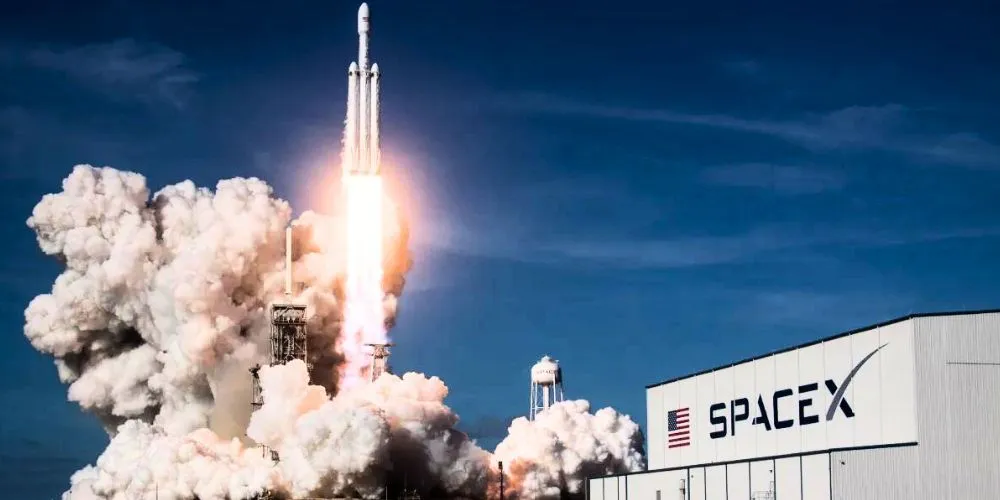Since its inception in 2002, SpaceX has aimed to revolutionize space exploration by making space travel more affordable and accessible. Central to this mission is the Falcon 9 rocket, a groundbreaking vehicle that has transformed the aerospace industry through its innovative design and reusability. By significantly reducing launch costs and increasing the frequency of space missions, Falcon 9 has paved the way for a new era in space exploration. This case study explores the design, technological advancements, key milestones, and the broader impact on the space industry.
Background of SpaceX and Falcon 9 Rocket
Elon Musk founded Space Exploration Technologies Corp. (SpaceX) to reduce the cost of space travel and ultimately enable human life on Mars. The Falcon 9 rocket, named in part after the “Millennium Falcon” from Star Wars, is characterized by its nine-engine configuration. It has been developed to fulfill various missions, from launching commercial satellites to resupplying the International Space Station (ISS).
The Genesis of Falcon 9
The development of Falcon 9 began in 2005, with the first successful launch occurring in 2010. SpaceX sought to create a reliable, cost-effective launch vehicle that delivers payloads into low Earth orbit (LEO) and beyond. The Falcon 9 rocket was designed to focus on reusability, allowing the first stage to be recovered and reused, drastically reducing the cost of launches.
Design Specifications
The Falcon 9 rocket is a two-stage vehicle powered by nine Merlin engines on its first stage and a single Merlin Vacuum (MVac) engine on its second stage. It is fueled by rocket-grade kerosene (RP-1) and liquid oxygen (LOX), achieving remarkable efficiency and performance. This design allows Falcon 9 to carry various payloads, including satellites, cargo for the ISS, and even crewed missions.
Key Technologies and Innovations
Falcon 9 rocket boasts various innovative features that distinguish it from traditional launch vehicles. These features enable SpaceX to push the boundaries of what is possible in space exploration.
Reusability: A Game Changer
One of Falcon 9‘s most revolutionary aspects is its reusable first stage. SpaceX engineers have developed a system that allows the rocket’s first stage to withstand the stresses of re-entry and landing. This capability has allowed SpaceX to recover and refurbish boosters, effectively cutting costs and redefining the economics of space launches. By 2023, some Falcon 9 rocket boosters have been reused over ten times, showcasing the potential for long-term sustainability in rocket launches.
Merlin Engines: Efficiency and Power
Nine Merlin engines, known for their high efficiency and performance, power the rocket’s first stage. The engines burn RP-1 and LOX, producing 1.7 million pounds of thrust at liftoff. This powerful propulsion system enables Falcon 9 to carry heavy payloads into LEO and other orbits, making it one of the most versatile rockets.
Payload Capacity and Versatility
Falcon 9 rocket is designed to deliver substantial payloads. It can carry up to 22,800 kilograms (50,265 pounds) to LEO and 8,300 kilograms (18,300 pounds) to geostationary transfer orbit (GTO). This versatility has allowed Falcon 9 to serve a wide range of missions, from launching commercial satellites for global communication networks to transporting cargo for NASA’s Artemis program.
Dragon Capsule Compatibility
Falcon 9 is closely integrated with the Dragon spacecraft, pivotal in resupplying the ISS. In its cargo and crewed variants, the Dragon capsule is designed to be launched atop the Falcon 9 rocket, making SpaceX a key partner for NASA. This collaboration has enabled NASA to regain its ability to send astronauts into space from U.S. soil after the retirement of the Space Shuttle in 2011.
Technological Innovations and Challenges
While the Falcon 9 has achieved numerous technological breakthroughs, its journey has also faced significant challenges.
First Launch and Initial Setbacks
The inaugural launch of the Falcon 9 rocket occurred on June 4, 2010, successfully placing a mock payload into orbit. However, early development faced several challenges, including rocket failures and delays. These setbacks tested SpaceX’s resilience, as the company was determined to realize its vision of creating a reusable rocket system.
The Historic Landing
A pivotal moment in the Falcon 9’s development came on December 21, 2015, when the first stage successfully landed back on Earth after delivering its payload. This milestone marked the first time an orbital-class rocket had been recovered, demonstrating that reusability was possible. The landing showcased SpaceX’s innovative approach and set the stage for future reusability.
Advancements with Block 5
Introducing the Block 5 variant in 2018 significantly improved Falcon 9’s design. Engineered for rapid reuse with minimal refurbishment, Block 5 can conduct up to ten missions with little maintenance. This version also features improved thermal protection and a more robust design, making it one of the most reliable rockets.
Milestones and Achievements
Falcon 9’s journey has been marked by numerous milestones highlighting its significance in the space industry.
NASA Partnership and Commercial Resupply Missions
In 2012, Falcon 9 became the first commercial rocket to successfully deliver cargo to the ISS under NASA’s Commercial Orbital Transportation Services (COTS) program. This mission validated Falcon 9’s capabilities and established SpaceX as a trusted partner for NASA.
Historic Crewed Missions
The Falcon 9 launched the Crew Dragon spacecraft on its Demo-2 mission in May 2020, carrying NASA astronauts Bob Behnken and Doug Hurley to the ISS. This marked a historic milestone as it was the first time a commercial company had sent astronauts to space, further solidifying Falcon 9’s reliability.
Starlink and Global Connectivity
Falcon 9 has successfully launched SpaceX’s Starlink satellites, designed to provide global internet coverage. With hundreds of satellites already in orbit, Falcon 9 is crucial in building the Starlink constellation, which aims to offer high-speed internet access to underserved and remote areas worldwide.
Record-Setting Launches
By 2023, Falcon 9 had completed over 200 missions, setting records for the most launches by a private company and the most successful booster landings. These achievements underscore the rocket’s operational reliability and impact on the aerospace sector.
Impact on the Space Industry
The success of the Falcon 9 rocket has profoundly influenced the space industry, reshaping how launches are conducted and how companies approach space exploration.
Lowering Costs and Increasing Accessibility
Falcon 9’s reusability has significantly reduced the cost of accessing space, making it more affordable for government agencies and private enterprises. This price reduction has led to increased satellite launches, scientific missions, and space exploration initiatives, democratizing access to space.
Inspiring Innovation Among Competitors
The success of the Falcon 9 rocket has compelled other aerospace companies to reconsider their strategies. Competitors such as Blue Origin and Rocket Lab are investing in reusable rocket technology to replicate SpaceX’s model. This competitive landscape has accelerated innovation, pushing traditional aerospace players to adopt new technologies.
Promoting Commercial Space Ventures
Falcon 9’s reliability has spurred the growth of commercial space ventures, enabling a new generation of startups to enter the market. Companies focusing on satellite deployment, space tourism, and exploration missions are now more confident in securing reliable launch services, fostering a vibrant ecosystem in the aerospace industry.
Conclusion
The Falcon 9 rocket has revolutionized space travel through its innovative design, reusability, and cost-effectiveness. SpaceX’s bold approach to rocketry has not only made space more accessible but has also set new standards for the future of space exploration. With hundreds of successful missions and critical collaborations with NASA and other organizations, Falcon 9 stands at the forefront of the space industry. Its impact will continue to shape the future of aerospace, paving the way for more ambitious endeavors, including human missions to Mars and beyond. The Falcon 9 rocket is a powerful case study of how innovation, persistence, and strategic partnerships can fundamentally reshape an entire industry.










